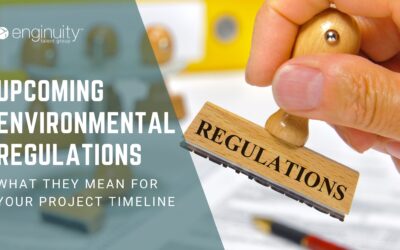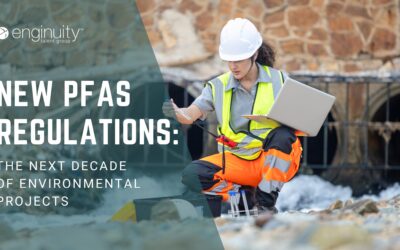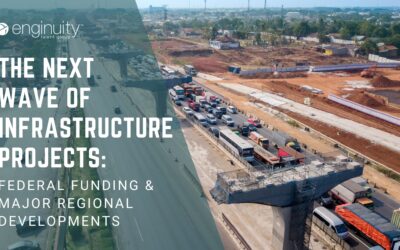Insights for Employers & Job Seekers
Upcoming Regulations: What They Mean for Your Project Timeline
From new National Environmental Policy Act (NEPA) requirements to federal and state-level restrictions on PFAS (per- and polyfluoroalkyl substances) and updates to the Clean Water Act (CWA), project leaders must prepare for longer review periods, expanded documentation requirements, and additional technical studies.
2025 Industry Outlook: Growth Sectors and Market Risks
The U.S. job market in 2025 is defined by both momentum and caution. Key sectors are expanding rapidly, fueled by federal investment, technological adoption, and shifting consumer demand. At the same time, rising capital costs, regulatory uncertainty, and ongoing talent shortages are creating new risks that leadership teams must navigate carefully.
The Key To Saving Time & Money: Early Collaboration Between Architects & Engineers
Early-stage collaboration between architects and engineers is more than a design preference; it’s a business strategy that directly impacts cost, schedule, and long-term project performance.
New PFAS Regulations and Their Impact on Environmental Work: What Projects Will Look Like in the Next Decade
Federal and state governments are rolling out a new wave of PFAS regulations that will fundamentally reshape the landscape of environmental work. For professionals in remediation, water treatment, and compliance, the next decade will bring both technical challenges and unprecedented opportunities for innovation. Understanding the implications of these regulations is no longer optional, it is essential for anyone shaping the future of environmental practice.
The Next Wave of Infrastructure Projects in the U.S.: Federal Funding and Major Regional Developments
The United States is entering a new era of infrastructure investment unlike anything seen in generations. With federal funding programs rolling out at unprecedented scales, state and local governments are advancing projects that will redefine how Americans live, work, and move over the next decade. For civil engineers, contractors, and construction managers, this surge presents both technical challenges and long-term opportunities that will shape the industry for years to come.
The Rise of Adaptive Reuse Projects in Urban Development: Why It’s Becoming a Major Trend
Adaptive reuse has emerged as one of the most significant movements in contemporary architecture and urban development. Once viewed as a niche approach reserved for historic landmarks or boutique projects, it has now become a mainstream strategy for cities seeking sustainable growth, developers pursuing cost efficiency, and communities demanding cultural continuity.






